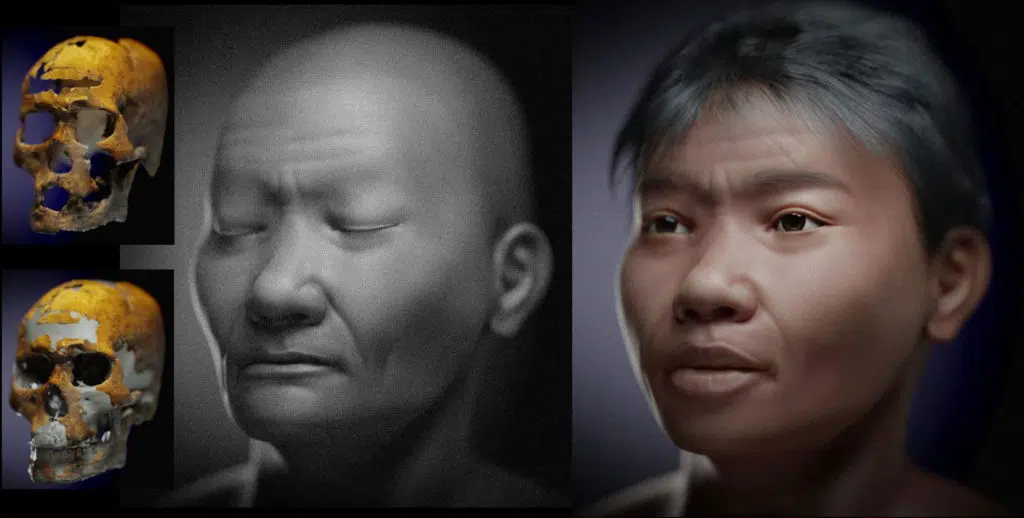
Scientists have created a new facial approximation of a 9,600-year-old skeleton found in Brazil, known as Zuzu, which could settle a long-standing debate over the individual’s gender.
The skeleton was found in 1997 at Brazil’s archaeological site in Serra da Capivara National Park known as Toca dos Coqueiros. Ever since its discovery, the skeleton has been the topic of contention, with some scholars asserting that the individual who passed away was a man.
Facial approximations of Zuzu
The new facial approximations provide an insight into the appearance of one of Brazil’s oldest ancestors and could help settle the debate over the individual’s gender.
Using photogrammetry, researchers digitally stitched together dozens of photographs of the skull from different angles to create a virtual 3D model. They, then, used computerized tomography (CT scans) from living virtual donors to adjust the structure of the skull and create two facial approximations of what Zuzu may have looked like in life.
“Trying to recover the appearance that an individual had in life thousands of years ago is a way to bring them to the present day, bringing them closer to the public,” the author, Moacir Elias Santos, who is also an archaeologist working at the Ciro Flamarion Cardoso Archaeology Museum in Brazil, explained his findings.
The author further said, “The main interest was to be able to glimpse the face of Zuzu, whose skeleton is one of the most important finds in the Serra da Capivara National Park region.”
According to the information given by the virtual donors, one of the representations depicts a young man with hair and eyebrows, while the other depicts Zuzu without hair and with his eyes closed. Both represent a young guy with a prominent nose and lips.
The researchers pulled down the lower jaw to fill up the space left by the absence of teeth in the subject.
“[We] adjust the structure of the skull to transform the donor’s skull into a volume almost equal to Zuzu’s skull,” co-author of the research Cícero Moraes said. “When we do this, the soft tissue follows this deformation/adaptation and results in a face that is expected, [and] compatible with Zuzu in life.”
More understanding of the past
According to the study, “Although the skull has affinity with an Asian population, among individuals of such ancestry there are a large number of structural differences, which are circumvented by closing the eyelids.”
It further said, “The image was also rendered in grayscale (black and white) as there is no accurate information about the skin color. Therefore, such an image would be the closest to what the real face could be.”
New facial reconstruction of a 9,600-year-old Zuzu man who lived in Brazil. Reconstruction made by using photogrammetry of the skull they as digitally stitched 57 photographs together to create a virtual 3D model of the skull pic.twitter.com/tgsv5RhmJO
— Nrken19 (@nrken19) February 14, 2023
Moacir Elias Santos, the lead author of the study, expressed that the most exciting aspect of the research is the chance to visualize how Zuzu would have looked like when she was alive, which is a way of reconnecting with one of the most ancient ancestors of Brazil.
“The most interesting thing when looking at Zuzu’s skull is having an idea of what he would have looked like in life,” Moacir Elis said.
This new information about the appearance of Zuzu can give us a glimpse into the past and a better understanding of our roots, which can be a fascinating experience for people interested in history and anthropology.
By bringing ancient history to life, it is possible to bridge the gap between the present and the past and create a sense of connection with our ancestors. The research also highlights the importance of using modern technology to bring ancient history to life and make it more accessible to the public.
See all the latest news from Greece and the world at Greekreporter.com. Contact our newsroom to report an update or send your story, photos and videos. Follow GR on Google News and subscribe here to our daily email!



